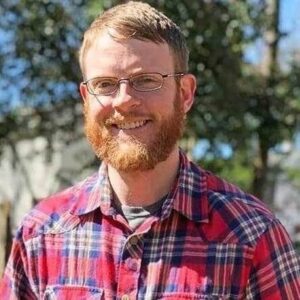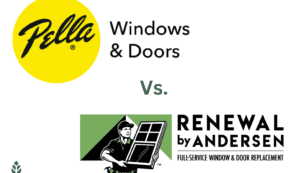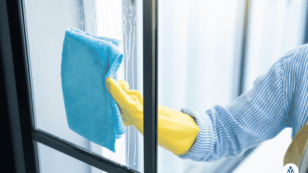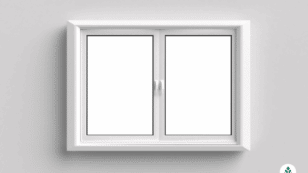
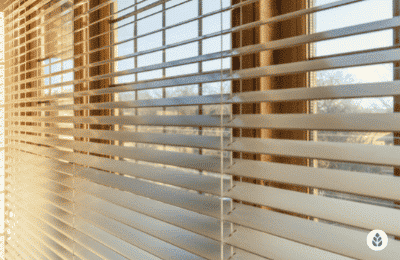
Compare the Most Energy-Efficient Window Companies (2024 Review)
In this guide on energy efficient windows, you’ll learn:
- How do energy-efficient windows compare to normal windows?
- What are the advantages of energy-efficient windows?
- What energy-efficient options are there to choose from?
- How much will I have to pay for these windows?
Each product and or company featured here has been independently selected by the writer. You can learn more about our review methodology here. If you make a purchase using the links included, we may earn commission.
The EcoWatch Reviews team analyzed dozens of energy-efficient window providers across the country to provide readers with rankings of the most energy-efficient window companies. Keep reading to learn more about how these reputable companies scored in our various review categories and which ones provide the best energy-efficiency features, prices, availability, customer service, and more.
What Are Energy-Efficient Windows?
Manufacturers design energy-efficient or high-performing windows to minimize the heat transfer between the interior and exterior of your home. By improving your home’s insulation, these windows reduce energy consumption and your carbon footprint and create energy savings, which is excellent for your wallet and the environment.
Who Are The Most Energy-Efficient Window Providers?
- Renewal by Andersen: Widest Availability
- Window World: Industry Veteran
- Window Nation: Best for Residential Windows
- Universal Windows Direct: Best Warranty
- Aeroseal Windows: Best for Businesses

Renewal by Andersen

Save $375 Off Each Window
Average cost
Pros
- Great industry reputation
- Award-winning company
- Member of US Green Building Council
- Manufactures products in-house
Cons
- No lifetime warranty
- More expensive than competition
Renewal by Andersen has been a standout in the industry since 1995 for its durable, high-quality, and energy-efficient windows combined with a 20-year warranty on new windows and 10-year warranty coverage on all window hardware.
This provider has an A rating with the Better Business Bureau (BBB) and a commitment to energy efficiency: all its windows meet or exceed ENERGY STAR and Green Seal standards – something we love seeing at EcoWatch.
Renewal by Andersen is also a member of the U.S. Green Building Council, a council dedicated to sustainable, energy-efficient building materials and installation practices.
While Renewal by Anderson’s windows land on the pricier side, if you have the budget, it offers durable, energy-efficient windows made from patented Fibrex material frames and sashes. They contain 40% reclaimed wood fiber combined with Low-E4 glass to make your home more thermally efficient.
Facts and Figures: Renewal by Andersen
| EcoWatch Rating |
|---|
| Better Business Bureau (BBB) Rating |
| Service Area |
| Average Cost ($-$$$$$) |
| Solar Services |
| 4.5 |
| A |
| 48 States (No MS or WV) |
| $$$ |
| Replacement Windows, Replacement Doors, Patio Doors |

Window World
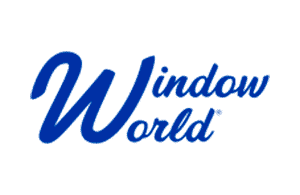
200 Locations Nationwide
Average cost
Pros
- EnergyStar Partner
- Large service area
- Wide variety of products and services
- Great industry reputation
- Lifetime warranty
Cons
- Quality of service will depend on your area
Window World is an ENERGY STAR partner known for selling some of the most affordable window installations nationwide. While it doesn’t provide its famous $189 window prices from the 1990s anymore, its prices remain less expensive than many of its competitors, a big bonus for homeowners on a budget.
Many Window World products combine a warm-edge spacer system, Low-E glass, and argon gas fills to improve a home’s energy efficiency. This A+ provider (BBB) is also EPA lead-certified. It has specially trained technicians to follow lead-safe work practices to reduce your home and family’s exposure to lead.
Facts and Figures: Window World
| EcoWatch Rating |
|---|
| Better Business Bureau (BBB) Rating |
| Average Cost ($-$$$$$) |
| Solar Services |
| 4.5 |
| A+ |
| $$$ |
| Replacement Windows, Replacement Doors, Patio Doors, Storm Dors, Front Doors, Shutters |

Window Nation

9 States (75 miles from showrooms)
Average cost
Pros
- Award-winning company
- Wide variety of products and services
- Manufactures products in-house
- Custom Designs
Cons
- Installation not covered by warranty
- Limited service area
Founded in 2006, Window Nation is a widely recognized, reputable window and door installer offering many energy-efficient products. More than 95% of Window Nation’s products are ENERGY STAR qualified, showing its commitment to saving customers money on energy bills and contributing to a more eco-friendly planet.
Every Window Nation window has energy-efficient features, such as a Low-E glaze to reduce damaging UV rays, double-pane or triple-pane glass, and argon gas fills to increase your home’s insulation.
In addition to these sustainable practices, Window Nation sports an A rating from the BBB. It has a range of quality products, services, and window customizations that let you match your home’s aesthetic.
Facts and Figures: Window Nation
| EcoWatch Rating |
|---|
| Better Business Bureau (BBB) Rating |
| Average Cost ($-$$$$$) |
| Solar Services |
| 4 |
| A |
| $$$ |
| Replacement Windows, Replacement Doors, Front Doors, Roofing Services |

Universal Windows Direct
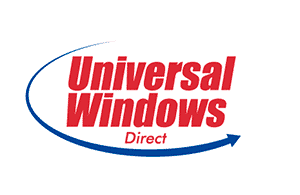
Nationwide (27 States)
Average cost
Pros
- Wide variety of products and services
- Makes charitable contributions
- Lifetime warranty
- Manufactures products in-house
Cons
- Limited service area
- Some installations carried out by third-party contractors
- Quality of service will depend on your area
This window provider has an A rating from the BBB and a solid reputation among consumers for offering high-quality window products that won’t bust a homeowner’s budget. Universal Windows Direct’s vinyl windows are protected with a lifetime warranty that covers the window, parts, and workmanship for life, ensuring your windows protect you for decades.
The company’s UniShield series has higher gas fill rates and longer gas retention than most competitors, giving you better energy efficiency performance and savings on utility bills.4
We love seeing these product offerings, especially in multiple stylish designs. However, this energy-efficient window series is only available in some markets.
Facts and Figures: Universal Windows Direct
| EcoWatch Rating |
|---|
| Better Business Bureau (BBB) Rating |
| Average Cost ($-$$$$$) |
| Solar Services |
| 4 |
| A |
| $$$ |
| Replacement Windows, Replacement Doors, Patio Doors, Front Doors, Energy Efficiency, Gutter Protection, Attic Insulation, Roofing Services |

Aeroseal Windows

13 States + DC (CT, DC, DE, FL, GA, MA, MD, NC, NH, NJ, PA, RI, TN, VA)
Average cost
Pros
- Many years of experience
- Great industry reputation
- Low number of customer complaints
- Manufactures products in-house
- Custom Designs
Cons
- No lifetime warranty
- Not ideal for residential installations
Aeroseal Windows is a family-owned business with a strong reputation from customer reviews and an A+ rating from the BBB. The company specializes in commercial products for a large client base, including historic properties.
Aeroseal Windows doesn’t give many details about its eco-friendly windows. But it shares that prospective customers can reach out to upgrade commercial windows and doors for greater energy efficiency. Energy-efficient features may include weatherstripping, Low-E glass coating, and double or triple-pane windows.
Facts and Figures: Aeroseal Windows
| EcoWatch Rating |
|---|
| Better Business Bureau (BBB) Rating |
| Average Cost ($-$$$$$) |
| Solar Services |
| 4 |
| A+ |
| $$$ |
| Replacement Windows, Replacement Doors, Glass Storefront, Balconies and Railings |
How Do the Most Energy-Efficient Window Replacement Companies Compare?
| Company | Renewal by Andersen | Window World | Window Nation | Universal Windows Direct | Aeroseal Windows |
| EcoWatch Score | 4.5/5 | 4.5/5 | 4.0/5 | 4.0/5 | 4.0/5 |
| BBB Rating | A | A+ | A | A | A+ |
| Year Started | 1995 | 1995 | 2006 | 2002 | 1999 |
| States Availability | 48 | 50 | 13 | 28 | 13 |
Do Energy-efficient Windows Save Money?
Energy-efficient windows are an excellent way to save money, with the U.S. Department of Energy reporting that windows are responsible for 25% to 30% of heat loss and heat gain in the home.
A lack of insulating glass, Low-E coating, and other energy performance features can significantly affect energy costs, making energy-efficient windows a good investment for many homeowners. ENERGY STAR estimates that replacing single-pane windows can save between $101 and $583 annually. Replacing double-pane windows with clear glass will save you an estimated $27 to $197 annually. These savings vary based on energy rates, local climate, and your home’s energy efficiency.
How Much Do the Top-Rated Energy-efficient Windows Cost?
While the average window may cost between $200 and $1,200, it’s not uncommon for energy-efficient windows to cost more because of the following factors:
- Frame material: Fiberglass and wood window frames are usually more expensive than aluminum or vinyl windows. As a result, companies like Window Nation, which primarily offer vinyl products, have less expensive prices compared to providers like Renewal by Andersen. But Renewal by Anderson has a much greater variety of frame materials.
- Energy efficiency features: Upgrading to energy-efficient windows costs more than a basic single-pane window because manufacturers use more material: glass, glazes, warm edge spacers, and gas fills. To ensure a higher price is justified, check the windows for ENERGY STAR certification and energy performance labels from the National Fenestration Rating Council (NFRC). This council independently rates a product’s energy performance based on the U-Factor, air leakage, visible transmittance, and solar heat gain coefficient.
- Window type and size: Like shopping for any product, the type, style, and size of the product affects its price. A double-hung window will cost around $450 to replace, but a larger casement window costs an average of $750.
Look at each provider’s average cost ranges to help you assess which company will best suit your needs.
What Types of Windows Do the Top-rated Energy-efficient Offer?
Window World offers by far the largest range of window styles, with Renewal by Andersen offering the second-best variety of residential window types.
Single-hung windows and glass block windows were two of the least common windows. We found that only Window World offered both of these window types.
See how these providers stack up against each other regarding product offerings.
| Photo | Window type | Renewal by Andersen | Window World | Window Nation | Universal Windows Direct | Aeroseal Windows |
 |
Glass block | ✓ | ✓ | ✓ | ||
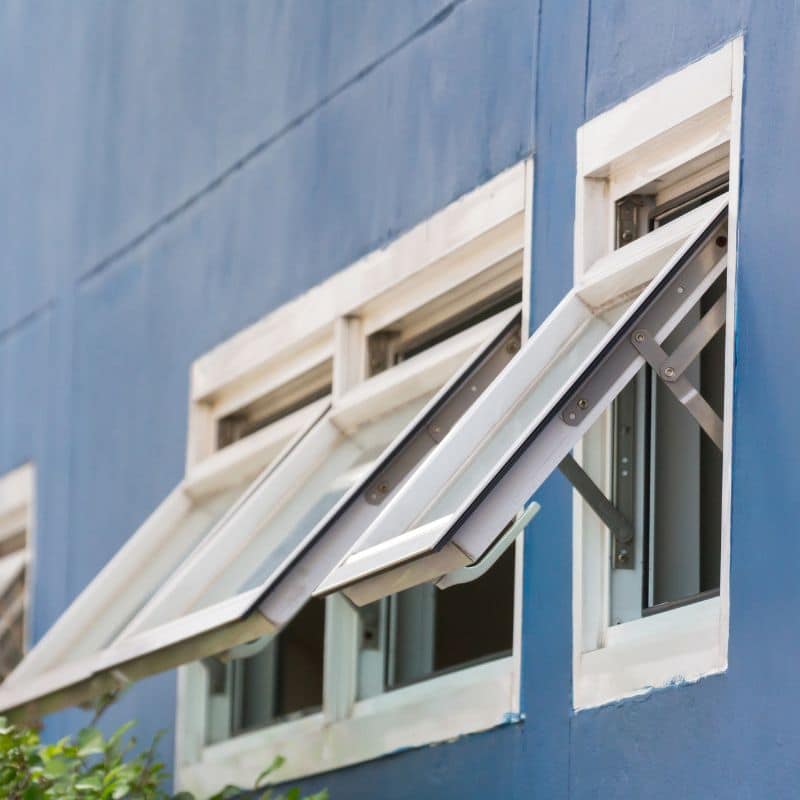 |
Awning | ✓ | ✓ | ✓ | ✓ | ✓ |
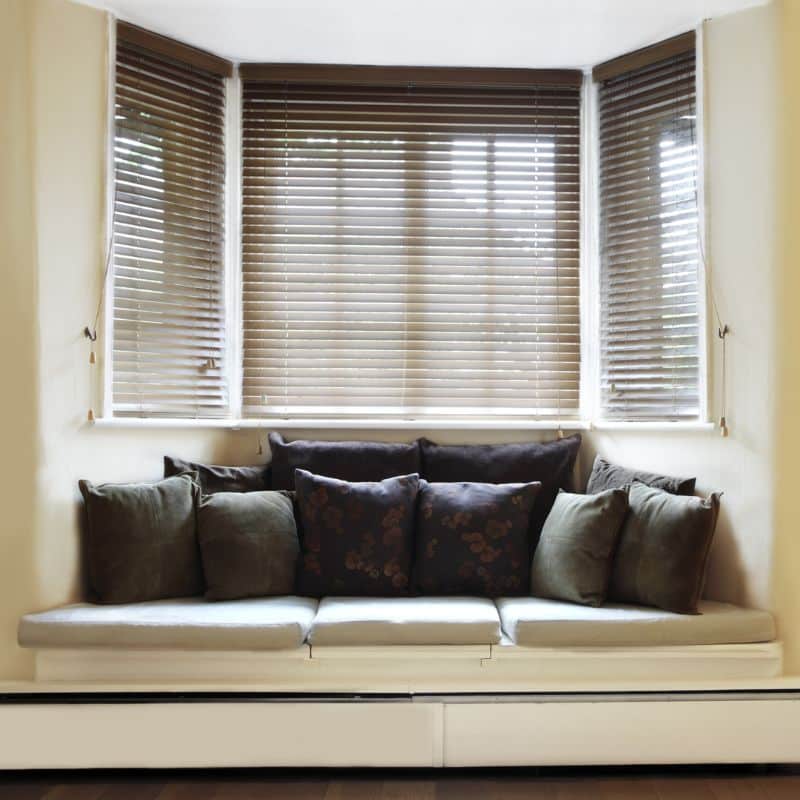 |
Bay | ✓ | ✓ | ✓ | ✓ | ✓ |
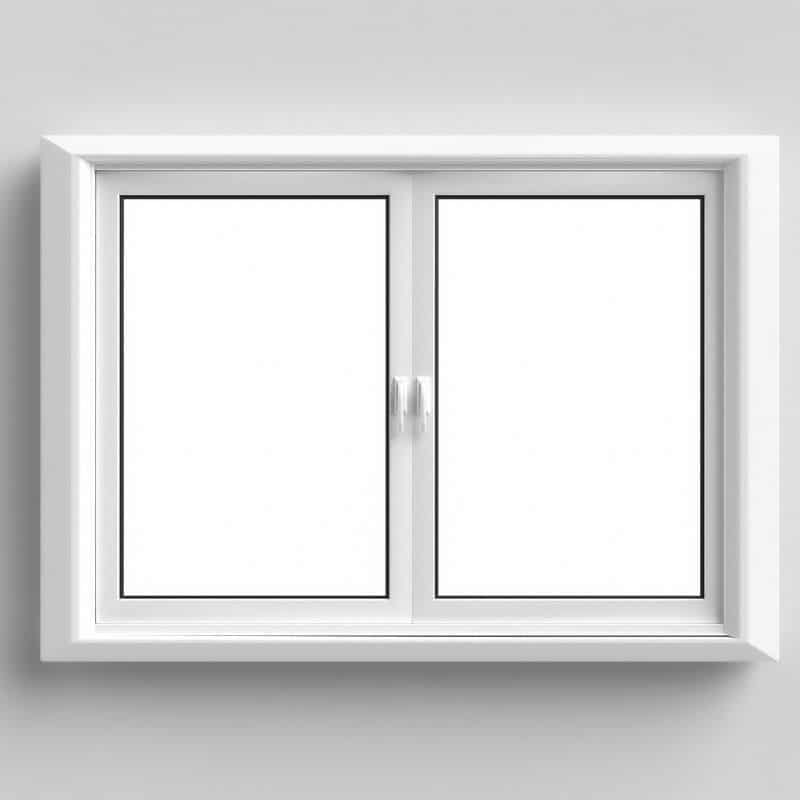 |
Casement | ✓ | ✓ | ✓ | ✓ | ✓ |
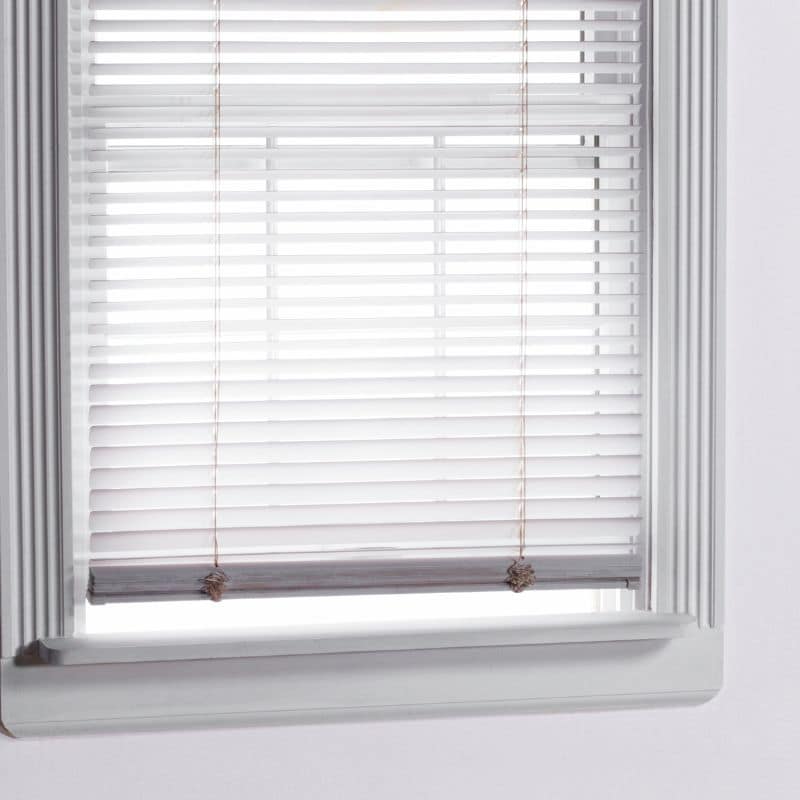 |
Double-hung | ✓ | ✓ | ✓ | ✓ | ✓ |
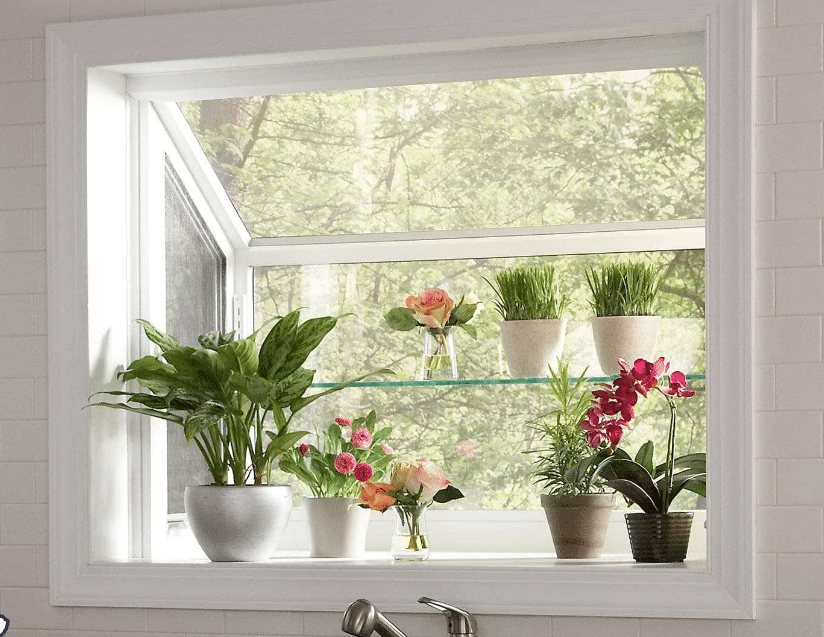 Source: Window World |
Garden | ✓ | ✓ | ✓ | ✓ | |
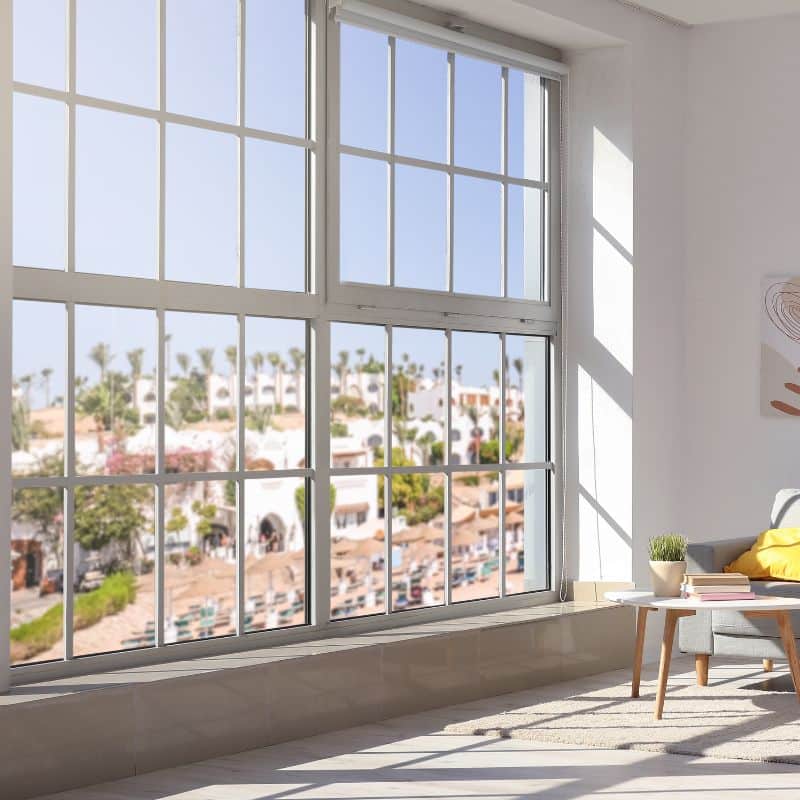 |
Picture | ✓ | ✓ | ✓ | ✓ | ✓ |
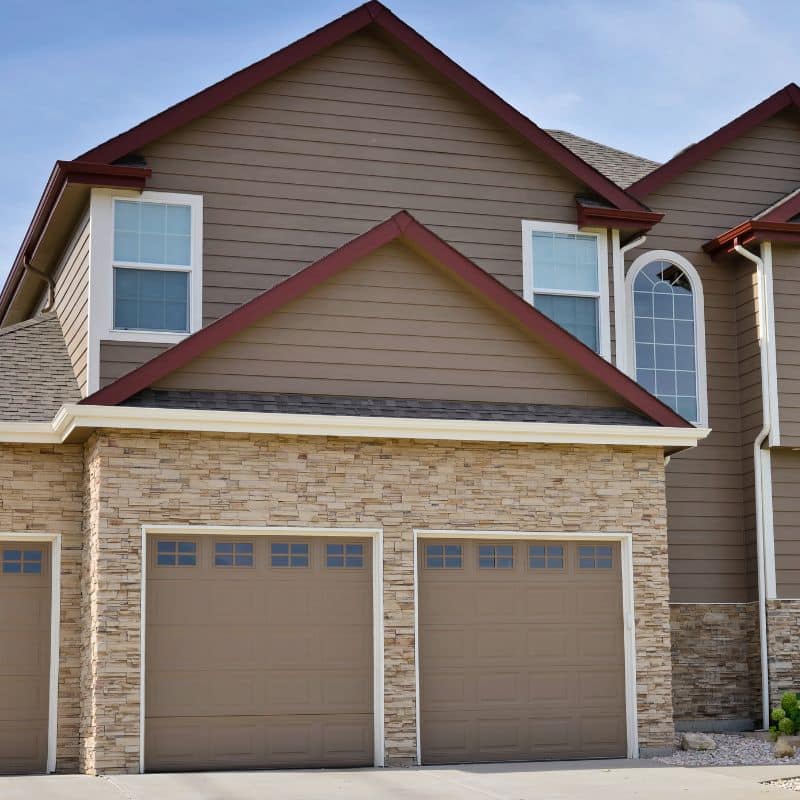 |
Single-hung | ✓ | ✓ | ✓ | ||
 |
Sliding | ✓ | ✓ | ✓ | ✓ | ✓ |
 |
Specialty | ✓ | ✓ | ✓ | ✓ |
So, What Is the Best Energy-efficient Window Company for Your Home?
The EcoWatch Review team recommends Renewal by Andersen as the best window company because of its unique, energy-efficient Fibrex window material, the assortment of window styles, and ENERGY STAR-certified windows.
But before you decide, gather quotes from multiple window companies to budget appropriately and get the best high-performance windows for your home. If you’re unsure which home windows best suit your needs, speak with a company representative for more details about energy efficiency features and customization options.
Methodology: How We Rank Energy-Efficient Window Companies
EcoWatch reviews differ from most websites, as we’re examining these companies through a sustainability lens. We’ve reviewed the best window installers primarily based on energy efficiency, as it’s what’s best for the environment and for you as a homeowner. Energy-efficient windows have been shown to lower energy bills by hundreds of dollars.
Along with energy efficiency, our rating methodology is based on the following factors:
Service Area
This one is pretty self-explanatory, but we’ve chosen to highlight window installation companies that serve a wide variety of states and cities so you can find a quality energy-efficient window installation company near you.
Quality of Services
We’re willing to bet that you’re not looking for a company to do a shoddy job installing windows. We’ve vetted each company featured on this list to ensure its technicians are well-qualified and the company has received tons of positive customer feedback to vouch for its service.
Cost
As with most services, cheap window installers will not provide the highest quality service, so this one is a give-and-take. However, we want to highlight energy-efficient window providers that offer a wide range of price and financing options so they’re accessible to most homeowners.
Warranty
Energy-efficient windows are a sizable investment, so you’ll want to ensure that investment is well protected. Window installation companies that offer lengthy warranties for products, parts, and installation (aka workmanship) rank higher with EcoWatch.
Customer Satisfaction
Another self-explanatory yet incredibly important review factor is customer feedback. If most customers don’t have nice things to say about their experience with a certain window installation company, you won’t see it featured on EcoWatch.
Years of Experience
Last but not least, we like to see companies that have a proven track record in the industry. Window providers with more experience will earn higher rankings by our standards. We like to see at least ten years of experience.
FAQs: Best Energy-Efficient Windows
You can make your windows more energy efficient by checking your existing windows for air leaks. If you find air leaks, use caulk and weatherstripping to fill in gaps.
If you live in a hot climate, we recommend prioritizing windows with a Low-E glass, otherwise known as low emissivity glass. Low-E coating blocks a considerable amount of ultraviolet (UV) light and infrared (IR) light, reducing the passage of heat into your home.
R-value measures the thermal resistance of a window’s glass. Higher R-values indicate better insulation. A good R-value for a window is four.

 233k
233k  41k
41k  Subscribe
Subscribe 

